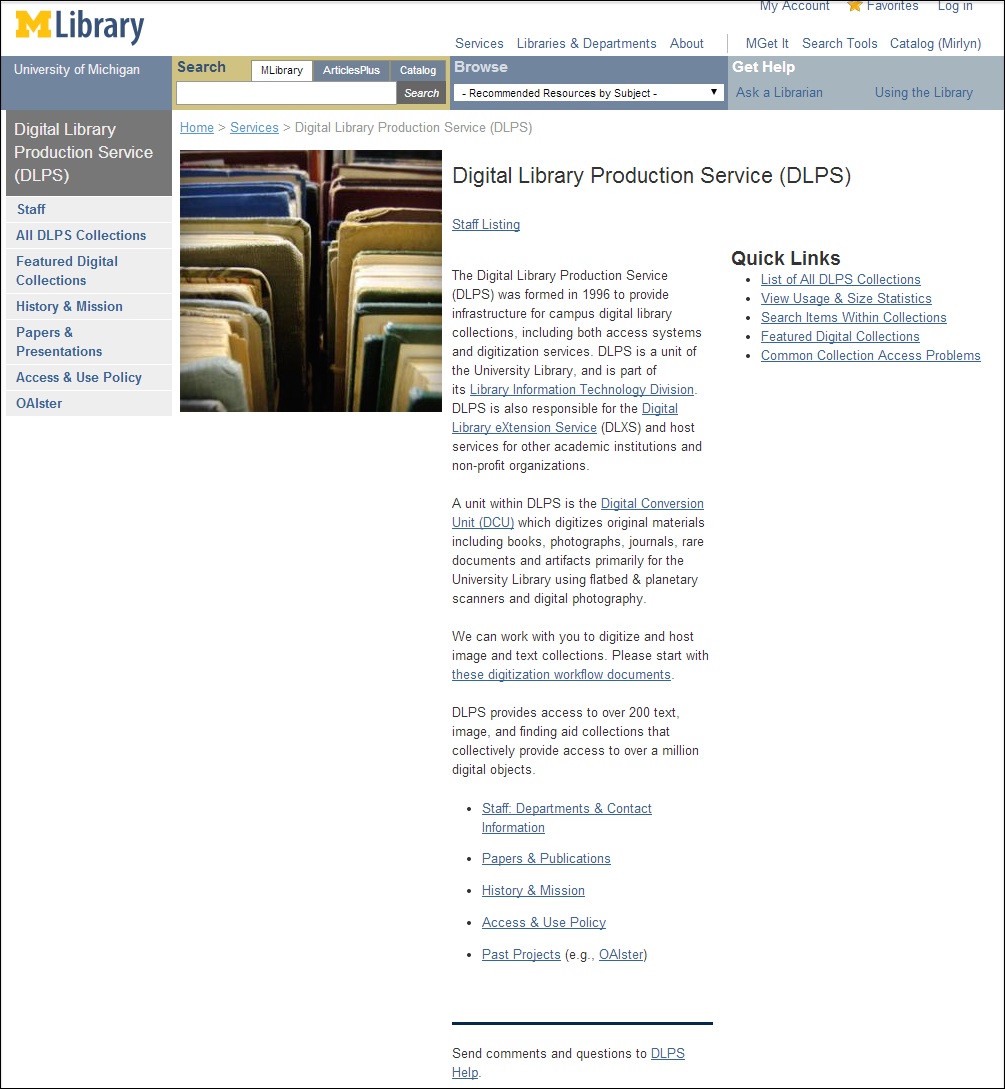The Digital Library Production Service (DLPS) recently did a thoughtful and comprehensive update of its web presence on the University of Michigan Library website. Numerous pages were evaluated to decide whether they should remain and be updated, be moved to another location such as the staff intranet, or simply be discarded. The process was guided by the expertise of the Library’s User Experience Department and the web coordinator for the broader Library Information Technology division.
We are incredibly fortunate to have a User Experience department representing the best interests of users, which includes a dedicated web content strategist to think wholistically about how and why we present the information we do.
We were encouraged to consider:
- Who is the audience?
- What is the action we’re trying to inspire or enable?
- What are the users’ needs?
- And, NOT emphasizing our organizational unit and structure.
This led to productive discussions about how to best represent DLPS. Given DLPS is a unit that exists to provide services (e.g., digitization) to the library and campus as well as resources (e.g., access to digital collections) to end users, there was inherent tension and a need to balance multiple needs. The following is a snippet of an exchange.
Question: “So is this about the unit or the products of the unit?”
Response: “It's really both, and that is intentional. ... Patrons looking for digital collections will get put on the right track. U-M librarians wondering what the best way to discover collections get that answered. Anyone that is really interested in the details of DLPS as an organization, or in starting a project, will find that here too.”
Have a look at the refreshed web pages. Time will tell whether we really got it right, or not. Either way, we cleared away a lot of cruft, reducing the site from 90+ to 30+ pages. The process itself was instructive and very satisfying. Several staff made significant contributions throughout the process especially our unit’s web coordinator, the division’s special projects librarian, and managers of our service areas.
Prime examples:
- DLPS home page: Greatly improved with a nice emphasis on providing the users with the info that would be most useful. Below is the DLPS home page before our refresh work.

DLPS Home Page Pre-Refresh
- Starting a digitization project: Streamlined the web content and moved some information to PDFs, which are intentionally omitted from website search results.
- Flora and Fauna: Information about this important legacy project was condensed into just the necessary bits. Fourteen pages were reduced to two! Some content was relocated in Deep Blue– let’s hear it for the Library’s institutional repository!
- OAIster: Another great example of content reduction was achieved when many historical pages were moved to the Library staff intranet, leaving just one concise page on the site.
A talented web content specialist is a great asset for any library to have. Consider the complexity of an academic research library’s site, including the sheer number of content creators, and the fact patrons depend on it daily in their scholarly pursuits. When you do, it becomes hard to ignore the importance of taking a strategic user-focused approach.